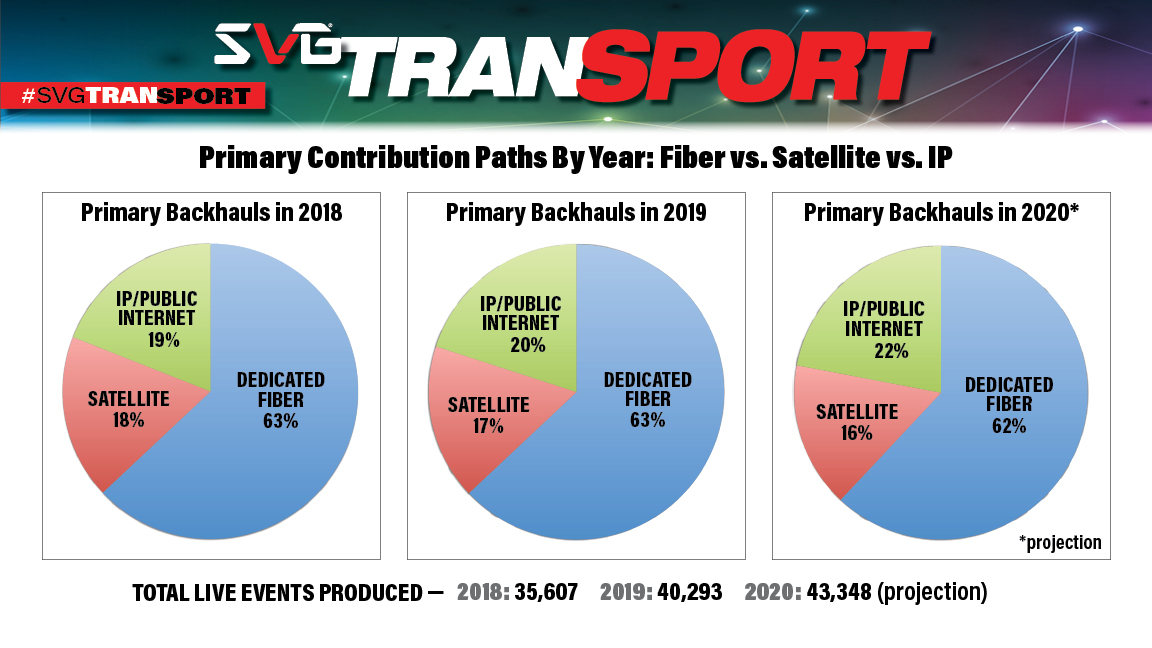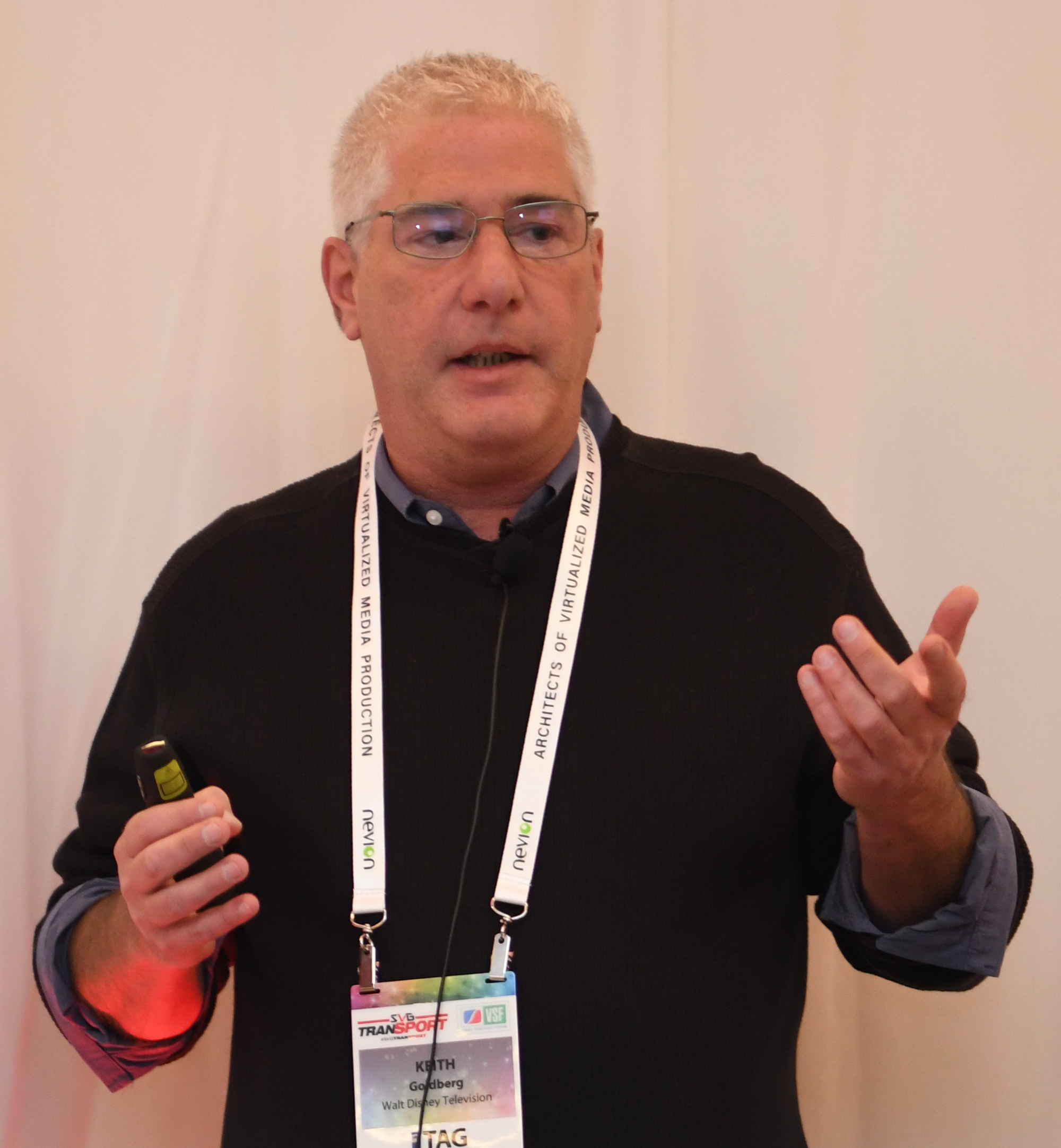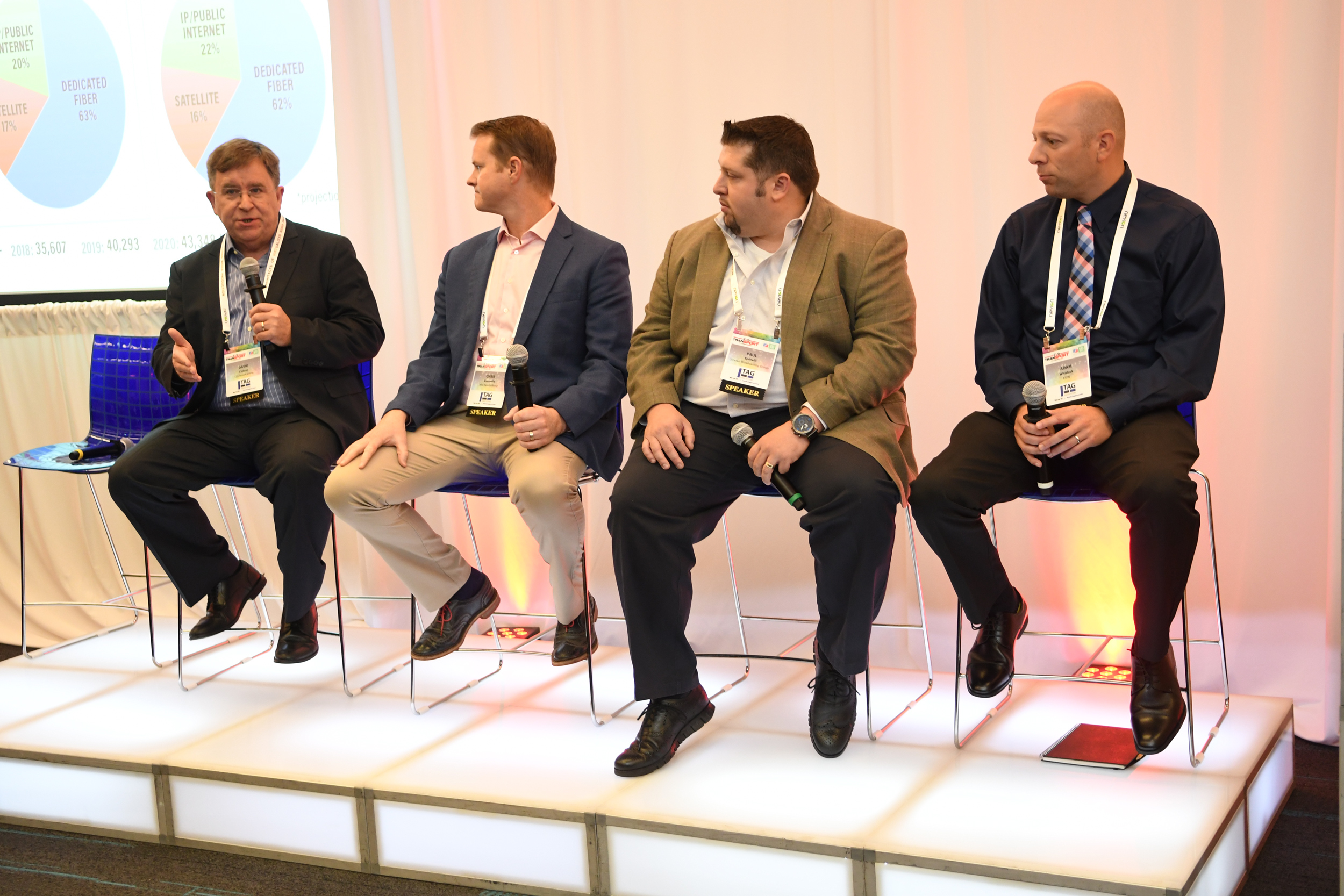SVG’s TranSPORT Unites Sports Transmission Community as Industry Undergoes Massive Change
Nearly 300 attendees pack in to discuss the latest in video transmission and contribution tech and trends
Story Highlights
SVG’s annual TranSPORT conference returned to New York City’s Microsoft Conference Center on Oct. 15, and welcomed more than 275 attendees for a day of networking and sessions focused on the current state of sports-content contribution, exchange, and distribution.

Nearly 300 attendees packed into the Microsoft Technology Center in New York City for SVG’s annual TranSPORT conference.
TranSPORT’s speaker lineup addressed the industry’s most pressing issues before the standing-room only crowd, including the latest developments in terrestrial and satellite backhaul, IP and bonded-cellular contribution, the potential of 5G, OTT and streaming technologies, ATSC 3.0, cloud-based encoding, next-gen compression methods like HEVC and JPEG XS, 4K and HDR delivery, the rise of “at-home-production” workflows, and more.
“We’re living in some strange days here,” said Keith Goldberg, Walt Disney Television, VP, Global Operations; who also served as the 2019 TranSPORT Committee Chair. “The media landscape – the OTT (over-the-top) streaming providers and the mobile providers – are looking to collaborate and decode some of the complex consumption habits of viewers these days. So its a very crowded marketplace. OTT video and mobile platforms are all looking and vying to find the innovative product to expand their subscriber base. With over-the-top streaming seeming to be more of the accepted, emerging way of distribution it seems there’s more players than ever.”
The event kicked off with “The State of TranSPORT: Broadcaster Perspectives”, an annual “state of the industry” session featuring transmission-focused execs from major sports broadcasters sounding off on the most pressing issues facing the industry today. Industry leaders — and SVG TranSPORT committee members —David Chilson, Director of Broadcast Distribution Operations and Engineering, CBS; Chris Connolly, Senior Director, Transmission Engineering and Operations, NBC Sports Group; Paul Spinelli, Director of Engineering, Sinclair Broadcasting Group; and Adam Whitlock, Associate Director, Remote Traffic Operations, ESPN, took part in the discussion, which was moderated by Goldberg.
 The opening panel also featured the release of the 2019 SVG TranSPORT Survey results, which collects data from major U.S. sports broadcasters to determine contribution/backhaul trends in the industry. This year’s numbers represented minor change compared to the two previous year’s: 63% of events utilized dedicated fiber for its primary backhaul, while 20% used IP/Public Internet and 17% leveraged satellite. That’s compared to 63%, 19%, and 18%, respectively last year. Projections for next year indicated these numbers will change slightly again with the major broadcasters predicted 62% of their events will be on dedicated fiber, 22% on IP/Public Internet, and 16% on satellite. Perhaps the most encouraging number was the total sporting events being produced, as the 2018 figure of 35,607 events produced jumped to 40,293 this year and is projected to increase to 43, 348 in 2020.
The opening panel also featured the release of the 2019 SVG TranSPORT Survey results, which collects data from major U.S. sports broadcasters to determine contribution/backhaul trends in the industry. This year’s numbers represented minor change compared to the two previous year’s: 63% of events utilized dedicated fiber for its primary backhaul, while 20% used IP/Public Internet and 17% leveraged satellite. That’s compared to 63%, 19%, and 18%, respectively last year. Projections for next year indicated these numbers will change slightly again with the major broadcasters predicted 62% of their events will be on dedicated fiber, 22% on IP/Public Internet, and 16% on satellite. Perhaps the most encouraging number was the total sporting events being produced, as the 2018 figure of 35,607 events produced jumped to 40,293 this year and is projected to increase to 43, 348 in 2020.
A panel on the 5G revolution followed, featuring panelists from NBA Entertainment, IBM Aspera, and LiveU in discussion about how 5G has been utilized at events like the U.S. Open, NBA Summer League, PyeongChang Winter Olympics, and more, as well as how the next-gen technology could impact operations in the near future.

Keith Goldberg, VP, Global Operations, Walt Disney Television served as 2019 TranSPORT Committee Chair.
After a networking lunch, leaders from major broadcasters and OTT services —including Fox Corp., SinclairDigital, Endeavor Streaming, and TAG Video Systems — weighed traditional vs. OTT distribution technology, dissected their technological strategies, and offered a peek at where the business is headed.
“Cloud vs. On-Prem: The Shifting Future of Encoding, Playout, and Distribution” was next to take the stage, featuring cloud vendors and encoding experts like AWS, Imagine Communications, and Signiant discussing the latest technological development and how to find a happy medium between on-prem and the cloud.
Following a networking break, industry leaders from ESPN, Harvard University, LTN Global, MediaLinks, Teradek, and Zixi discussed the state of IP contribution and internet-based production and how increased network reliability using both public and private internet — as well as the introduction of future codecs — promises to make IP the new normal for broadcast supply chains.
A look at compression standards in 2020 — including JPEG XS, HEVC, and SMPTE VC-6 — was up next, giving experts in the field the opportunity to break down the challenges and opportunities surrounding these next-gen compression technologies. Representatives from Nevion, MediaKind, VITEC, and V-Nova took part in this informative discussion.

From left: CBS’ David Chilson, NBC Sports’ Chris Connolly, Sinclair Broadcasting Group’s Paul Spinelli, and ESPN’s Adam Whitlock opened SVG’s TranSPORT conference with a “State of the Industry” discussion.
TranSPORT 2019 was once again bookended by a pair of “state of the industry” sessions, including a closing panel featuring execs from top terrestrial, satellite, and IP transmission vendors — including Aldea Solutions, CenturyLink, and SES — who shared how they are adapting and finding innovative new ways to serve both client and fan.
In addition to the packed slate of panel discussions, TranSPORT included a case study presented by Net Insight, an update on ATSC 3.0, and a technology spotlight on Microsoft Azure’s cloud-based workflows.
SVG TranSPORT was made possible through the support of the TranSPORT committee and the event sponsors: Title Sponsor AT&T; Diamond Sponsors CenturyLink, IBM Aspera, and Teradek; and Event Sponsors AWS Elemental, LiveU, Media Links, Net Insight, Nevion, Signiant, TAG Video Systems, V-Nova, and Zixi.
Stay tuned to www.sportsvideo.org for more in-depth reports, video interviews, and photos from TranSPORT.
Karen Hogan, Jason Dachman, and Brandon Costa contributed to this story
